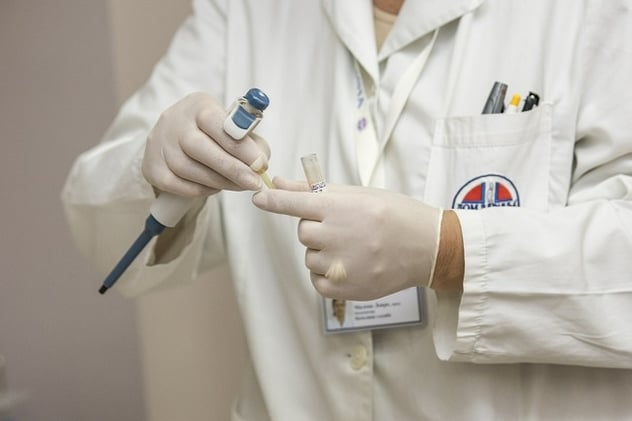CANSFORD LABS
UK Hair testing 101: What do cut-offs mean and why do they matter?
on Aug 29, 2017

Cut-offs, chromatography, chemical fingerprints: hair testing jargon can be bewildering for the first-time user. Hair testing is a straightforward test for the presence of drugs, alcohol or other substances - either there are drugs in the sample or there aren't. But when is the level detected enough to be concerned about?
Levels vary, an example is blood alcohol where 80 mg/100ml of ethanol on English and Welsh roads defines the driver a unfit to drive. In Scotland the limit is 55 mg/100ml. But the effect of alcohol is no different in England compared with Scotland.
These levels are known as cut-offs, and they’re essential for evaluating the results of any type of drug or alcohol test - blood, urine, saliva, and, of course, hair tests.
Here’s what you need to know about cut-offs in hair testing for drugs.
What do we mean by “cut-offs”?
A cut-off is the point which determines whether a test result is positive or negative. When results are below the cut-off, they are considered as “Not Detected” or “Negative”. When they are above the cut-off, they are considered “Detected” or “Positive”.
A “Positive” result in drug testing can confirm if a person has used or been exposed to a drug during a specific period (depending on the length of the sample). A “Negative” result, however, does not necessarily mean that someone has not used or been exposed to the drug; it could mean that a drug was detected in such a small amount that it may not have been through recent, voluntary use.
What are they used for?
The main purpose of the cut-offs used in hair analysis are:
- To minimise detection of drugs used in previous periods and increase detection of current use.
- To minimise the detection of drugs deposited from external contamination when the people tested don’t use drugs but have been in an environment where drugs are present.
How do they work?
The cut-off is set at the point at which the level of a substance in a sample is significant enough to be deemed a positive indication of deliberate use.
It is important to note that;
- Cut-offs vary between different substances (e.g. cocaine and cannabis).
- Cut-offs are different for different types of samples (e.g. urine and hair).
- Cut-offs vary depending on the method of analysis. The methodology used for screening immunoassays are usually different from those analysed by chromatographic methods. For example, when hair testing for cannabis use, the cut-off for THC using an immunochemical is 0.1 ng/mg and for a chromatographic test, the cut-off for metabolite THC-COOH is 0.002 ng/mg of hair.
- Cut-offs may vary between testing laboratories - different procedures are required depending on the type of equipment used.
- Cut-offs may vary with the purpose of the test.
Why do they matter?
The challenge of setting cut-offs is to ensure the point established is sufficiently high to rule out environmental contamination, yet low enough to be sure that someone must have abstained from the drug to test negative.
Without a cut-off, environmental contamination - the passive smoking of cannabis for instance - could lead to a false positive reading, which in family law could mean the difference between a parent reunited with their child and a family kept apart. In the workplace, it could mean the difference between an employee keeping their job or being sacked for gross misconduct.
What can’t they do?
Cut-offs can help us to understand drug use over a period of time, but they can’t give an exact date of use.
Perhaps more importantly, they cannot provide context. The test may show traces of a drug in a hair sample, but they cannot tell us why. Was the defendant at a festival, or in a drug den? Does the defendant continue to be a heavy drug user, or is the level detected a reflection of previous use and the donor has actually stopped using? People often see this as making a drug test with hair difficult to use. But we see it as an advantage to the donor as we can provide positive feedback - a detailed picture - when someone is reducing their use. The test shows they are trying to get off drugs. and that is not easy!
This grey area can prove frustrating for people...
...expecting a firm ‘YES’ or ‘NO’ from a testing lab. The reason that most tests are ordered in the first place is because someone has exhibited a behaviour consistent with substance or alcohol abuse. By providing that background context to the lab, they will be able to interpret the results in a more helpful way. For that reason, lawyers and caseworkers are just as much a part of the drug screening process as our laboratories.
Cut-offs alone can’t give us all the answers. But they can provide us with assurance that the test results we receive give a fair and accurate reflection of a defendant’s drug history. Paired with the expertise of a family lawyer or caseworker, they are an essential part of the hair strand testing process.

John Wicks
John Wicks is one of the UK's leading experts in drug testing and has been for over 25 years. He is CEO and co-founder of Cansford Laboratories, a drug and alcohol testing laboratory based in South Wales. John is one of the ‘original expert minds’ who alongside co-founder Dr Lolita Tsanaclis, is responsible for bringing hair testing to the UK.


